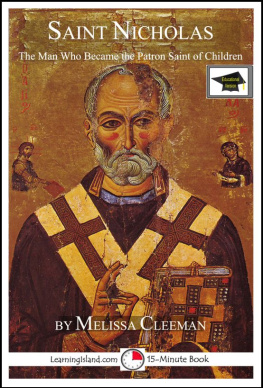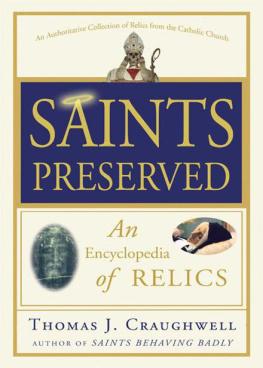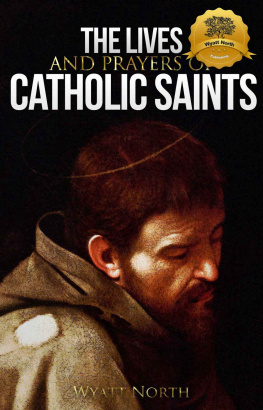
So many of us have discovered, slipped inside an old prayer book or Bible, one of these little religious pictures, the souvenir of a baptism or First Communion. Since the development of color lithography and offset printing by Godefroy Engelmann in 1827, countless series of these little cards have been produced on themes such as the history of France, types of plants, lives of famous figures, and so on. The process was a boon to department stores, then a nascent business model, to advertise their wares, but also to printers in abbeys and religious specialty print shops to circulate spiritual messages to young and old.
This little album gathers a selection of ninety-two holy cards as they came to be known, dating from the late nineteenth to the early twentieth century. The cards were edged with delicate paper lace and printed with reproductions of works by the great masters of painting, medieval themes, or images in an Art Nouveau styleevery artistic form, old or new, might be used to capture a tableau of the saints legend or biography. Saint Agatha and her fire, Saint Lawrence and his grill, Saint Cecilia with her organ, Saint Patrick and his snakes, Saint Catherine and her wheelthis delicious little book has something for everyone, believer or not, allowing us to discover or rediscover the stories and works of famous and lesser-known saints.
PATRON SAINT OF WET NURSES
Feast day February 5
Fabulously beautiful, rich and noble, this young Sicilian woman born in Catania in the third century had a comfortable life ahead of her. But as fate would have it, she came to the attention of the proconsul. This man, from a lower social class, wished to marry her and thus win respectability among the elite.
Agatha, a Christian, wanted nothing to do with this older, dissolute, and, worst of all, pagan suitor. In the face of this firm refusal, the proconsul took her to a brothel keeper named Aphrodisia, hoping that there Agatha would lose her virginity and her principles. For naughtthe young woman would yield to neither flattery nor threats.
Furious, the proconsul ordered that she be tortured, again without result. Even after her tormentors cut off her breasts, Agatha held firm. That night, Saint Peter appeared in her cell and healed her vicious wounds. The wicked proconsul, vanquished by Agathas moral strength but enraged by her resistance, sent her back to the torture chamber, this time to her death.
A year later, an eruption of Mount Etna threatened to engulf the town. Its inhabitants, although pagans, rushed to the tomb of the young Christian and brandished her veil: miraculously, the fire abated of its own accord. From that time on, the saint has been invoked for protection against earthquakes and fires. Due to the miraculous healing of her breasts, she has become the patron saint of wet nurses.

PATRON SAINT OF COUPLES, VIRGINS,
VICTIMS OF RAPE, AND SCOUTS
Feast day January 21
When Agnes was barely thirteen years old, her life was turned upside down. Returning from school one day, she crossed paths with the prefects son, who fell passionately in love with her.
It was third-century Rome, and the young man was certain that the promise of untold riches would convince Agnes to marry him. But the girl, very religious, wished to dedicate her life to Jesus. She claimed that she was already promised to an even wealthier nobleman. Devastated, the young man fell ill. Learning that the Christian religion was to blame for Agness refusal, the prefect had her paraded naked through Rome to a house of prostitution. But by the will of God, the girls hair instantly grew so long it formed a mantle covering her body. When Agnes arrived at the whorehouse, a miraculous light enveloped the place and all present fell to their knees in prayer. Stubborn, and as smitten as ever, the prefects son tried to approach Agnes, but was strangled by a demon. Casting the blame on the girl, everyone agreed that she must be burned as a witch. But the flames spared her, burning the spectators in her place. Finally, the executioner succeeded in cutting her throat, which is why she is depicted with a martyrs palm and a sword or dagger.

PATRON SAINT OF BEGGARS
Feast day July 17
Alexis grew up in a noble family in fourth-century Rome. Legend has it that his father placed at his disposition three thousand young slave women, but of greater significance is the fact that the senator endowed his only son with a refined education and a sense of high moral values. On the eve of his wedding, Alexis, disguised as a beggar, fled to the Syrian town of Edessa to devote himself to religion. The moment he arrived, he gave away all his possessions to the poor, hence becoming a beggar himself. He lived on alms and always bore the Blessed Virgins image. After seventeen years, Mary performed a miracle in honor of her faithful servant. She appeared to the treasurer of the Church of Edessa and enjoined him to offer lodging to this man of God. But Alexis, fearing that fame would ensue from this miracle, returned to Rome and began to beg outside his family home. Mocked by the servants, he spent another seventeen years in prayer and fasting, hearing from his shelter the tears of his aged father and disconsolate mother.
Later, sensing that his end was near, Alexis undertook to write the story of his life. But soon a mysterious voice coming from the sanctuary of Saint Peters Basilica told the emperors Arcadius and Honorius, as well as Pope Innocent, where the holy man was hiding: he was found dead with a parchment in his hand.

PATRON SAINT OF CONFESSORS AND MORALISTS
Feast day August 1
The son of a naval officer prominent in Naples high society, Saint Alphonsus came into the world wrapped in a caul. Alphonsus Liguori was born in 1696 and became a studious youth, with a future that promised a law career and a good marriage. Highly precocious, he entered the university at age twelve and at sixteen became a doctor of law. Unequaled as a litigant, he won every case for eight years. In 1723, bribes and political pressure corrupted a trial, and he lost for the first time. Disillusioned with the injustice of humanity, Alphonsus abandoned his legal work and decided to devote his life to God. He was ordained a priest and soon became a veritable missionary in the towns and countryside around Naples.
An excellent writer and astute theologian, Alphonsus was famed as a great essayist. His most important works, The Great Means of Prayer and Moral Theology, were translated into German, French, Spanish, and English. He was the inventor of aequiprobablism, a concept that struck a compromise between the extreme rigor of Jansenism and the laxity that ruled in many southern European bishoprics. He is also the founder of the Congregation of the Most Holy Redeemer, better known as the Redemptionists. His pedagogical and spiritual influence is quite strong in many countries even today, especially in Africa, South America, and southern Europe.














